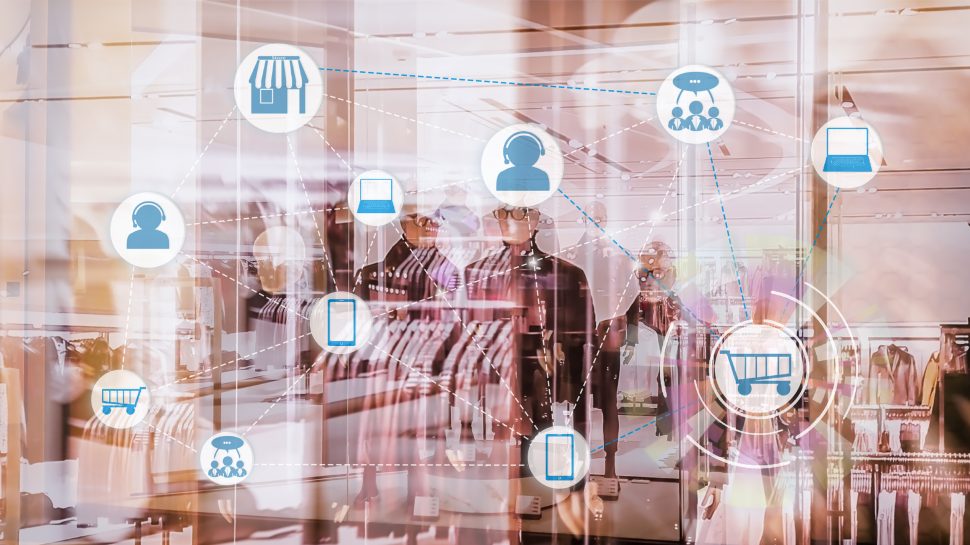Why the customer experience is more important than ever in the digital economy

The digital economy has changed the fundamental rules of doing business and what it means to compete. And consumers are winning.
As digital competition delivers better, faster, cheaper products and services from on-demand drivers, movies and meal delivery to a world of choice with online shopping, expectations continue to accelerate.
It may feel that brands such as Amazon, Uber, Netflix and Airbnb have raised the bar to impossibly high standards. Yet consumers have become used to that experience, and if your service doesn’t meet those expectations, they’ll go elsewhere - even if you’re selling insurance, electricity or a personal loan.
“Amazon and Alibaba are raising the bar when it comes to giving consumers the best retail experience possible, and Australian retail is catching up,” says Ben Franzi, General Manager Parcel & Express Services, Product & Innovation. “But we are innovating in product personalisation and payment platforms. For example, Afterpay now accounts for over 8 per cent of online retail spend, and its revenue grew by 700 per cent in the year to February 2018.”
What's next in Australia's digital economy?
What's next in Australia's digital economy?
Our insight paper looks at the key trends in eCommerce and service transactions, and how organisations can meet changing customer expectations with the next wave of technology.
New business models put customer needs and experience first
Over 1.5million consumers are now using Afterpay’s ‘buy now, pay later’ in-store or online app (that also offers a ‘pay now’ mobile service). When Cotton On integrated Afterpay into its online store, its sales grew by 17 per cent.
Afterpay meets the millennial shoppers’ need for instant gratification, but also removes friction from the personal loan and credit card space. As an interest-free product, it has turned the traditional finance model of making money from consumers on its head; the retailer pays the fee.
What started as a retail product is quickly having an impact in financial services as a competitor to both merchant services and credit cards. It’s a good example of how traditional industry lines are blurring in this new digital economy.
Uber’s disruption of taxi transportation has had broader implications; creating an expectation that when you finish your journey, you simply thank your driver and go, removing that final payment friction. The same idea is now being applied by Amazon Go’s pilot store in Seattle. Its ‘just walk out’ shopping experience allows you to use your Amazon Go app to enter the store, then take what you like and go.
“How you differentiate experience is the battlefield to win today, not just product,” says Franzi. “The consumer has so much more choice and flexibility around where, how and when they shop, and where and how they receive their deliveries.”
Today’s consumers can have it all
Traditional business theory prescribes a competitive choice between pricing high (and delivering high-quality services and products), or pricing low, (and delivering a lean service with less product choice). But now, digitally-enabled businesses can simultaneously offer the widest product range, the fastest delivery, the best customer experience and lower prices. How?
These businesses can access a global market, enabling them to scale their customer base. They use emerging tech like automation and artificial intelligence to personalise each individual customer experience. They have a real-time view of inventory, and a seamless supply chain. This is what’s changing the nature of commerce, and our competitive landscape.
So to compete with these businesses and take the lead in any sector, you’ll need to add significantly more value to your customers to maintain their attention – let alone their loyalty.
Franzi says this means getting two fundamental strategies right.
On-demand, and ‘made for me’
“First, what’s your speed strategy? Cost and experience are the parameters to watch. Retailers now need an omniview of where stock is, and the ability to run algorithms to work out how to get it into a consumer’s hands – fast,” he says.
In an on-demand economy, no industry has been untouched by this real-time response expectation. In the US, insurance start-up Lemonade’s AI claimbot set a world record in 2016, processed and paid a claim in just three seconds and with no paperwork (the consumer simply provided details by speaking into their phone).
The second strategy to get right is personalisation. The exponential growth in data we produce and the tech capabilities we have to analyse, draw insights and act, make personalised experiences ‘business as usual’.
“It can be simple things; such as recommendations or web content tailored to demographic data or preferences,” explains Franzi. He also believes the personalisation of products will continue to drive retail growth, as Shoes of Prey and Mon Purse have shown.
Banks are also realising the potential of personalisation for improved customer experience. For example, last year, Bendigo Bank and Adelaide Bank deployed IBM Watson’s marketing tools to enable real-time personalised interactions with customers whether they’re online or in a branch.
This approach makes a difference for government services as well. For example, the ATO’s tax return portal can now pre-fill individual tax returns with financial information from health funds, employers and other government agencies – simplifying a complex and often delayed process.
By focusing on speed and personalisation, you can get to the heart of consumer engagement, and make every touch point easier, faster and more relevant. When you do that well, you can build a long-term relationship based on loyalty, not just a one-off transaction.
Subscribe to our Building Business newsletter
Subscribe to our Building Business newsletter
Read engaging business stories, discover new ideas, and learn about great offers in our monthly business newsletter.



